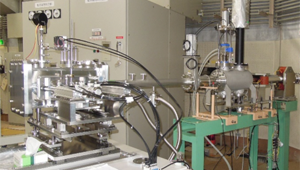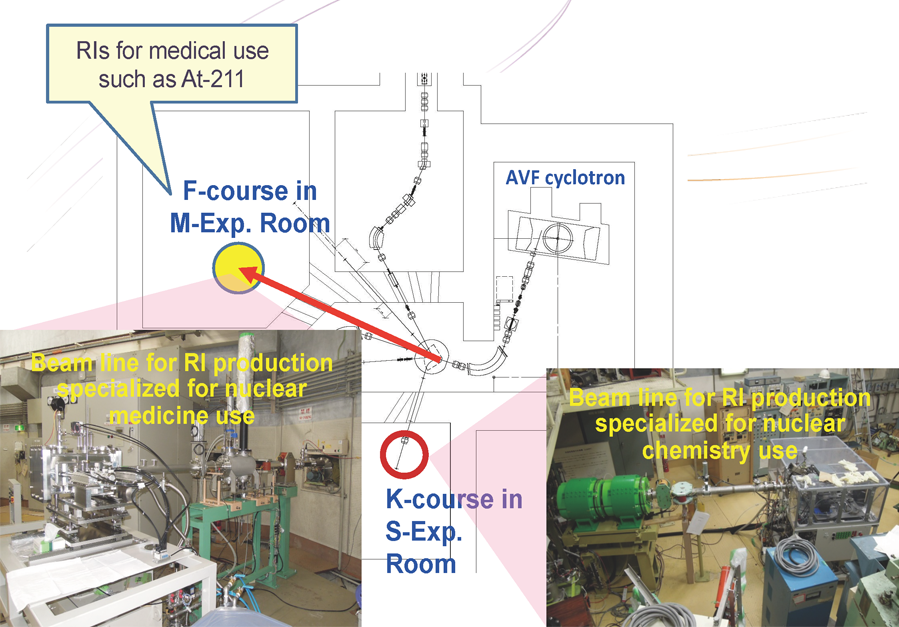 Cyclotoron Facility > About Cyclotron Facility > Beamlines and experimental devices
> Nuclear chemistry/Medicin
Cyclotoron Facility > About Cyclotron Facility > Beamlines and experimental devices
> Nuclear chemistry/Medicin
AVF K/F course [Nuclear Chemistry/Nuclear Medicin]
- Introduction
- Specification
- Layout
- Recent Results
- Publication List
 |
A variety of radio-isotopes(RI) are produced by ion beams from the AVF cyclotron for fundamental heavy-element chemistry and nuclear medicine. The exclusive beam line for RI production (K course) was installed in 2005. We have started fundamental research on targeted alpha-particle radiotherapy. The second beam line dedicated to nuclear medicine (F course) have been constracted in 2014. |
|
Ion beams for production of radio-isotopes(RI) is delivered from the AVF cyclotron to the K-course in the S-Experiment Room. A 10 to 80 MeV proton beam and 10 to 35 MeV/n D+ and 4He2+ beams are available. The maximum beam current is 5 particle-μ-A. An RI production target can be transferred to experimental rooms in the basement of the RI Building by a pneumatic tube to avoid radiation exposure during the target delivery. Radio-active elements are chemically separated in a draft chamber of the experimental room. A gamma-ray measurement system using a Ge detector is available in other experimental rooms. A beamline of the F-course in the M-Experiment Room was revived to provide ion beams for RI production. A new target chamber exclusive to production of various kinds of radio isotopes for nuclear medicine was installed at the end of the beam line. |
||||||||||||||||||
|
||||||||||||||||||

In order to establish a self-sufficient supply of 99mTc, we studied feasibilities to produce its parent nucleus, 99Mo, using Japanese accelerators. The daughter nucleus, 99mTc, is indispensable for medical diagnosis. 99Mo has so far been imported from abroad, which is separated from fission products generated in nuclear reactors using enriched 235U fuel. We investigated 99mTc production possibilities based on the following three scenarios: (1) 99Mo production by the (n, 2n) reaction by spallation neutrons at the J-PARC injector, LINAC; (2) 99Mo production by the (p, pn) reaction at Ep=50–80 MeV at the RCNP cyclotron; (3) 99mTc direct production with a 20 MeV proton beam from a PET cyclotron. Among these three, sccenario (1) is for a scheme on a global scale, scenario (2) works in a local area, and both cases take a long time for negotiations. Scenario (3) is attractive because we can use nearly 50 PET cyclotrons in Japan for 99mTc production. We here consider both the advantages and disadvantages among the three scenarios by taking account of the Japanese accelerator situation |
|


